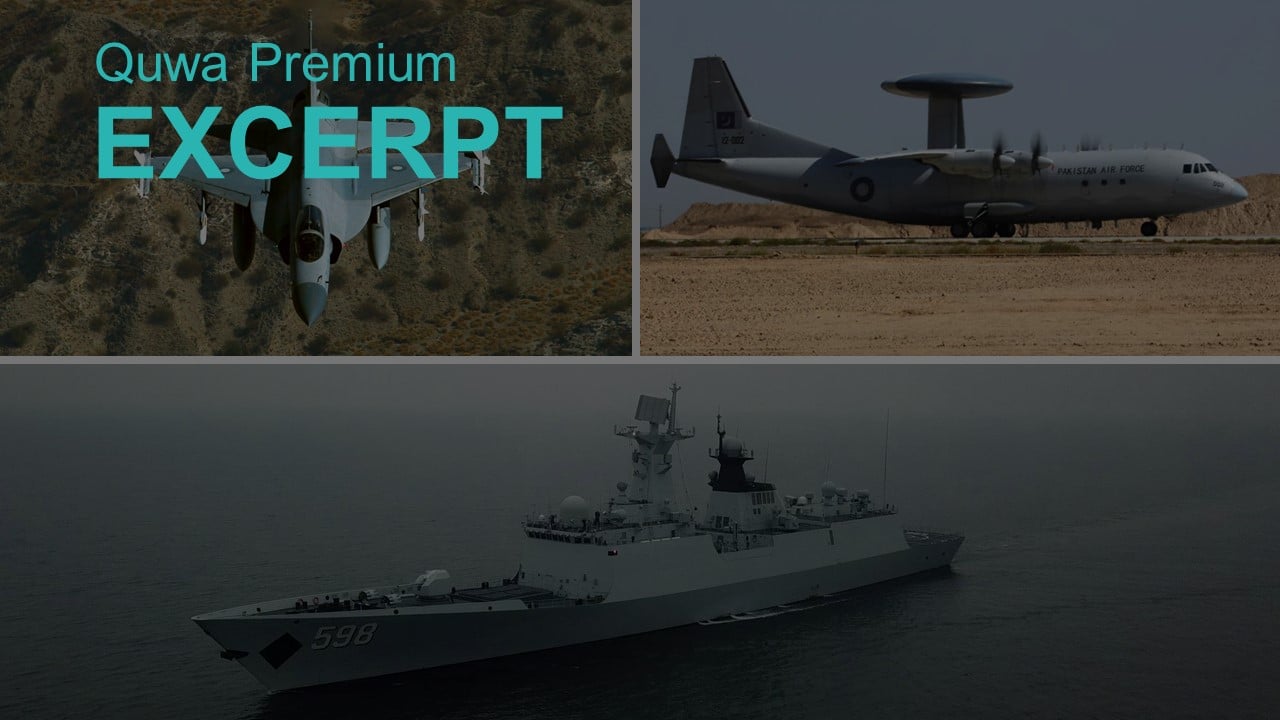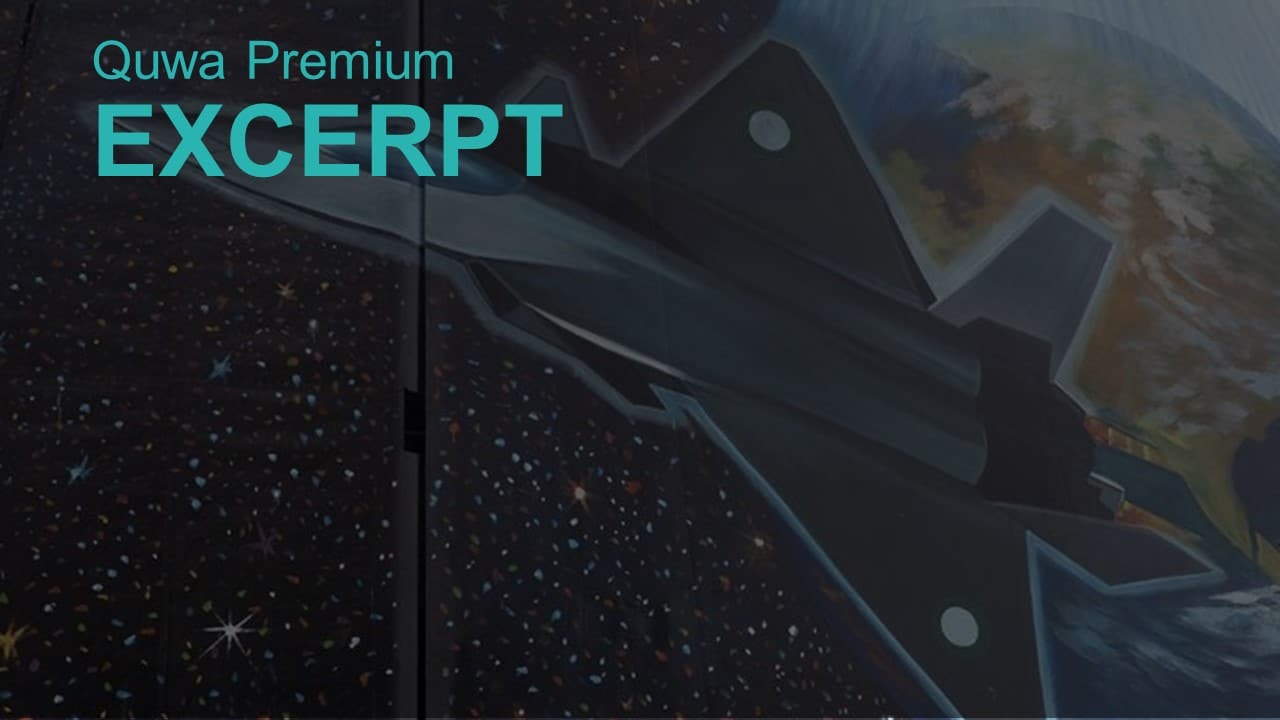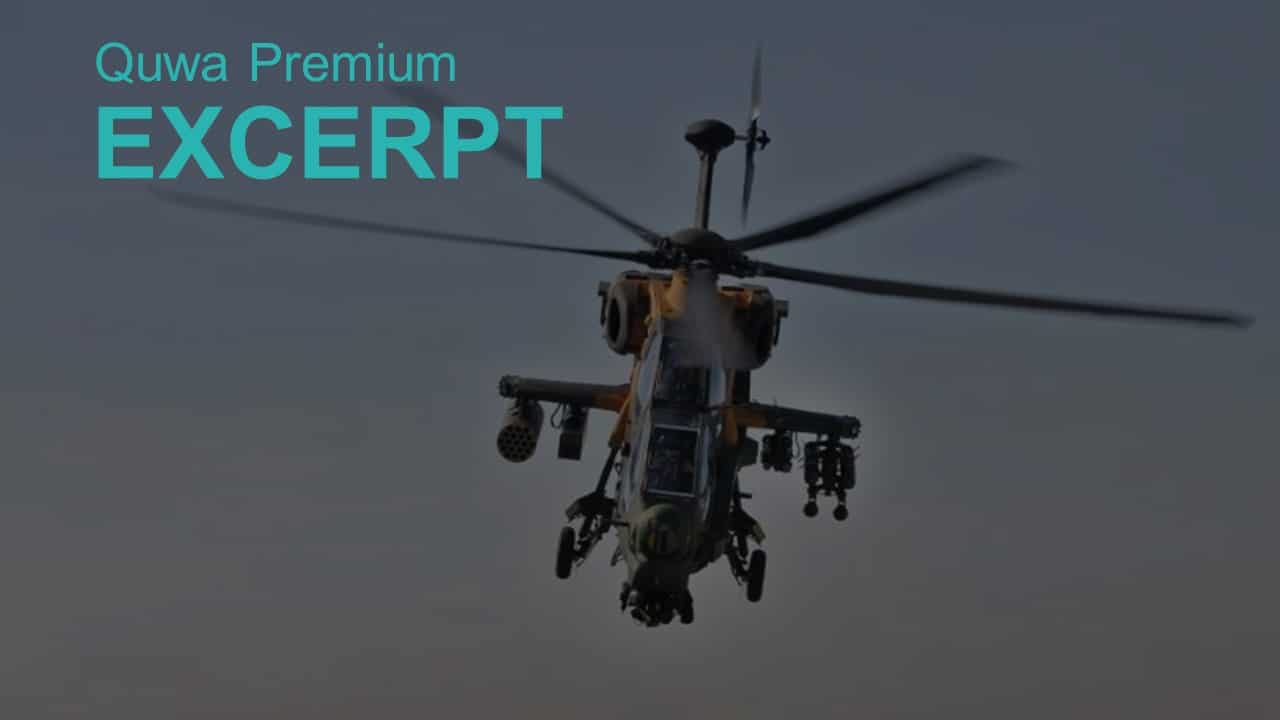2365Views

China is Pakistan’s Key Qualitative Driver
Today, the Armed Forces of Pakistan have at least three marquee and indispensable big-ticket weapon systems in the pipeline from China: in 2015, it inked a purchase of eight air-independent propulsion (AIP)-powered submarines; in 2017, the Pakistan Air Force (PAF) confirmed that its fifth-generation fighter (FGF) program – Project Azm – is being developed with Chinese support; and in 2018, the Pakistan Navy ordered two additional Type 054A frigates, totaling its order to four ships by 2021.[1] [2] [3]
Be it fiscal constraints, struggling ties with the West (particularly the US), inability to access analogous technology from other sources or – and potentially, most importantly – an alignment of strategic interests (or concerns) between Islamabad and Beijing, the supply of this equipment is vital to Pakistan’s ability to sustain and, potentially, extend its conventional capabilities vis-à-vis India’s advancements. However, the procurement track is assuming more than simply the need for alternatives (to inaccessible Western arms).
Rather, the breadth of these investments – notably Project Azm – could lay the groundwork for Pakistan to leverage China’s research and development (R&D) funding, industrial capacity and the scale generated by the People’s Liberation Army (PLA) to secure qualitatively advantageous solutions.
Most Countries Have a Principal Supplier
The availability of technology, especially core inputs such as engines and semi-conductors, is limited to a handful of countries. This is a critical point because politically-driven claims of indigenization has a general consequence of raising unrealistic expectations or surprises. For example, when Pakistan sought its next-generation submarine platform in the late-2000s, some had asked why Pakistan would need one when it apparently produces the Agosta 90B at Karachi Shipyard & Engineering Works (KSEW).
However, Pakistan does not source the critical inputs necessary for an entirely indigenous turnkey line of submarines. Be it the Agosta 90B or the forthcoming Hangor (II) submarines from China, local production at KSEW is contingent on importing those critical inputs (e.g. propulsion, steel, electronics, etc) from the original equipment manufacturer (OEM).[4] Once that foreign supply channel is untenable (e.g. due to cost and/or foreign relations issues), the weapon system in question is also untenable.
On the other hand, the reality of the global arms environment is that most countries, including most major powers, rely on a principal supplier (at least for core inputs, if not more). Limits in terms of generating the necessary scale, insufficient R&D funding and lack of R&D capacity in terms of infrastructure and educated human capital have basically left the US, China and (to a lesser extent) Russia as the sole powers that can maintain truly turnkey manufacturing at every level. France has significant indigenous capacity, though it too (as shown through its participation Future Air Combat System or FCAS with Germany) requires others to help build scale. Otherwise, the UK, Germany, Italy, Spain, Belgium and others in Western Europe have opted to either partner among themselves or procure from the US.
Thus, Pakistan’s reliance on a principal supplier is not surprising. In fact, thanks to China’s rise as a leading industrial power, Pakistan has been able to shift its supply channels from the US and Western Europe to China. In addition to shielding itself from the immediate effects of Western supply constraints, Pakistan is also able to capitalize on the PLA’s scale to procure increasingly sophisticated arms at affordable cost. As the PLA – especially the Navy (PLAN) and Air Force (PLAAF) – increasingly fill their respective inventories with contemporary systems, Pakistan can as well. The generational gap in mainstay systems between Pakistan and more affluent countries can plausibly close – thanks to the Chinese.
China’s Incentive for Arming Pakistan
Certainly, China wields significant leverage over Pakistan. As its principal supplier, it can choose to shape Pakistan’s conventional and, to a great extent, nuclear deterrence capabilities (e.g. the forthcoming AIP submarines are expected to deploy submarine-launched cruise missiles/SLCM compatible for miniaturized nuclear warheads) much in the manner the US has opted to (or sought to limit) through the decades.
However, bar internal regulatory controls (such as Beijing mandating export variants of its mainstay arms), it does not appear that China is averse to militarily strengthening Pakistan. Rather, current its geo-political realities could dictate a reinforced emphasis on having a relatively strong Pakistan, at least militarily…
End of Excerpt (696/1,515 words)
The full article is available to Quwa Premium subscribers here.
[1] “Pakistan Signs Contract To Acquire Two Chinese Naval Warships”. Associated Press of Pakistan. 01 June 2018. URL: http://www.app.com.pk/pakistan-signs-contract-acquire-two-chinese-naval-warships/ (Last Accessed: 02 June 2018).
[2] Ministry of Defence Production (MoDP) Yearbook 2015-2016 Part II. Government of Pakistan. p83
[3] Naveed Siddiqui. “Intruders traced on radar won’t be able to go back, warns air chief.” Dawn News. 07 December 2017. URL: https://www.dawn.com/news/1375166/intruders-tracked-on-radar-wont-be-able-to-go-back-warns-air-chief (Last Accessed: 09 June 2018).
[4] MoDP. 2015-2016. Part II. p83.


